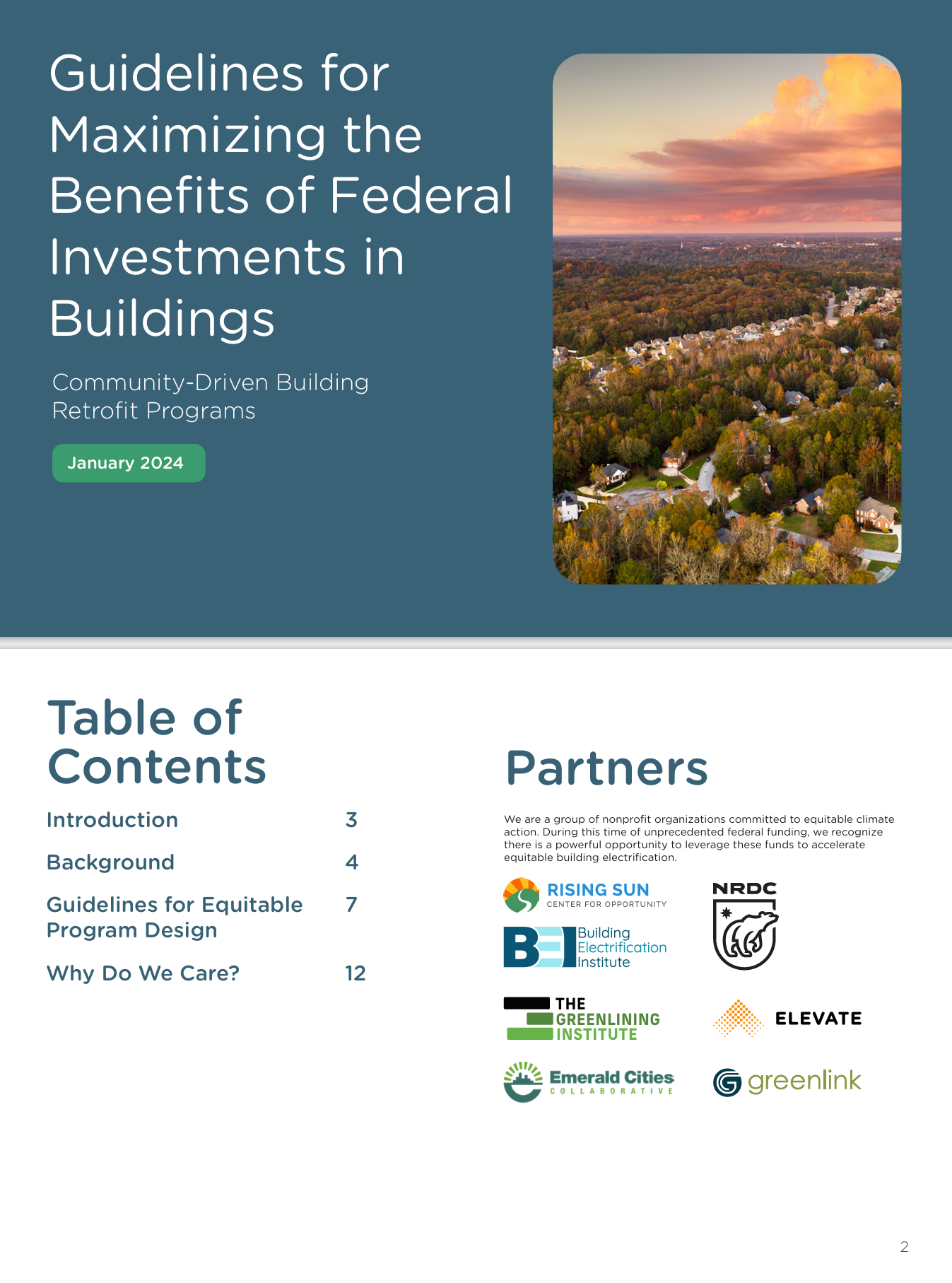The Inflation Reduction Act (IRA) and the Infrastructure Investment and Jobs Act (IIJA) will unleash billions of dollars of funding for building retrofits. To see equitable results from this funding, policy makers and program designers need to intentionally co-create retrofit programs that serve residential buildings in low- and moderate-income communities.
This guide was created by Elevate, Building Electrification Institute, Emerald Cities Collaborative, the Greenlining Institute, Greenlink Analytics, Rising Sun Center for Opportunity, and NRDC to provide a starting point for state policy makers and climate teams that are designing programs that will benefit from IRA and IIJA funding. With this direction, we hope to support programs that are equity-driven and co-created with the communities they aim to serve.
A building retrofit program is any program that will support building owners and decision-makers in implementing energy efficiency and electrification upgrades in their buildings. Building retrofit programs can provide a range of potential services and funding mechanisms, including incentives, rebates, or financing for energy efficient or all-electric equipment; technical assistance to building owners and decision-makers for completing retrofits; marketing and outreach to building decision-makers and communities; support for contractors who complete equipment installations; and coordination with other available programs.
A community-driven building retrofit program may provide some or all of these services while also incorporating a broader set of community priorities and needs in the development, delivery, and outcomes of a building retrofit program. Here are the guidelines for equitable program design:
- Understand your audience
- Provide flexibility to address local needs
- Encourage a one-stop-shop approach
- Center community input through co-creation

